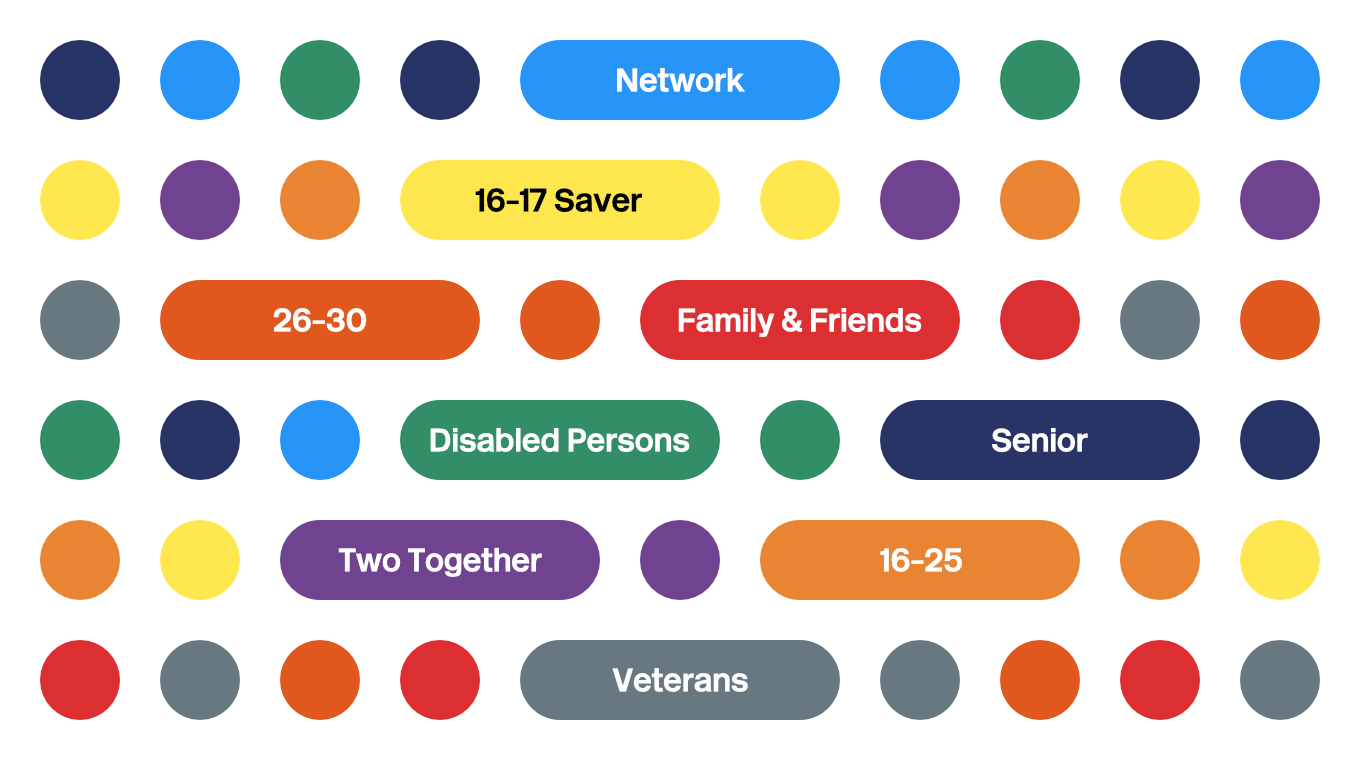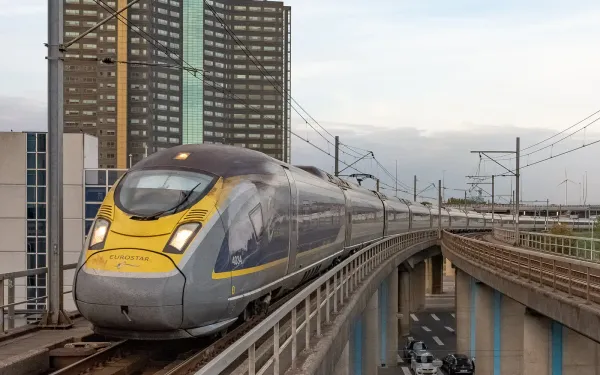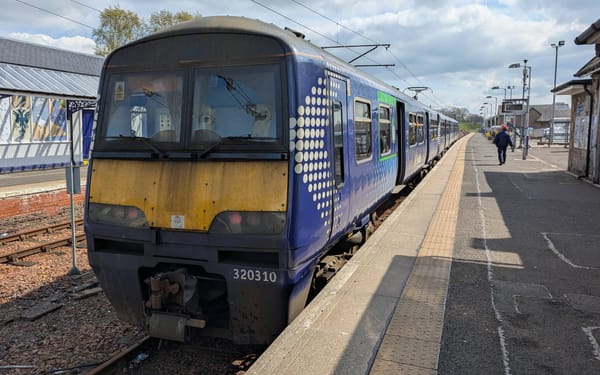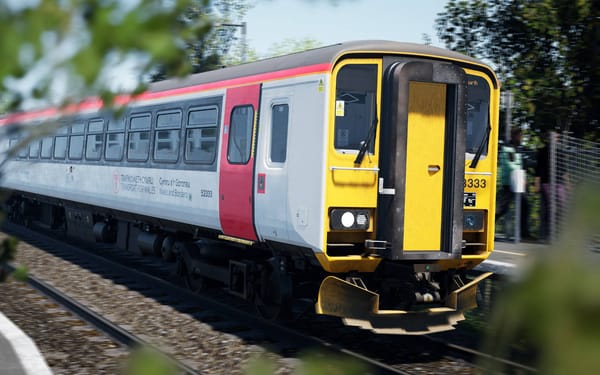Which Railcard should you buy?

The premise of a Railcard is simple: generally, you pay an annual fee of £30 and you get a third off train fares in Great Britain. But it's not a 'one size fits all' affair, and there are nine types of Railcard, each with their own eligibility criteria and quirks. It can get quite confusing, so which one can, or should, you buy?
I will focus mainly on the nine main Railcards that apply nationally, but some information will be provided about regional Railcards at the end. They can be a good way of securing a discount in your local area, even if you're not eligible for any other Railcards.
Summary
- If you are 16 or 17: 16-17 Saver
- If you are disabled and 18 or older: Disabled Persons Railcard
- If you are 18-30: 16-25 Railcard or 26-30 Railcard
- If you are over 60: Senior Railcard
- If you are a Veteran: Veterans Railcard
- If you are a mature student in full-time education: 16-25 Railcard
- If you regularly travel with another person: Two Together Railcard
- If you regularly travel with family: Family & Friends Railcard
- None of the above, but you live in London or the south east: Network Railcard
Disabled Persons Railcard
At the start of this article, when I said that you pay £30 a year for a third off train fares, that wasn't strictly true. The Disabled Persons Railcard is cheaper than the rest, at £20 for one year and £54 for three years (a saving of £6). Its price will also remain frozen in March 2025, whereas the annual fee for other Railcards will increase.
For that reason, it's worth considering whether you are eligible for this Railcard. You may well already have a good idea either way, but I have included the criteria in the box below, which you can access by clicking on the arrow.
Eligibility criteria
- receive Personal Independence Payment (PIP) or Adult Disability Payment (ADP)
- receive Disability Living Allowance (DLA) or Child Disability Payment (CDP) at either (a) the higher or lower rate for the mobility component, or (b) the higher or middle rate for the care component
- have a visual impairment
- have a hearing impairment
- have epilepsy
- receive Attendance Allowance, Severe Disablement Allowance or Pension Age Disability Payment (PADP)
- receive War Pensioner's Mobility Supplement
- receive War or Service Disablement Pension for 80% or more disability
- buy or lease a vehicle through the Motability scheme
Information about the evidence you will need to provide can be found on the Disabled Persons Railcard website.
If you hold a Disabled Persons Railcard, the discount will also apply to one adult companion travelling with you. You can use the discount on the Transport for London network with an Oyster 'pay as you go' card, but this will only apply to the Railcard holder and not also to their companion. First class tickets are also discounted and there are no minimum fares.
Even if you are eligible for this Railcard, one occasion on which it might be worth foregoing it is if you are aged 16-17. I will cover this in the next section.
If you are not eligible for the Disabled Persons Railcard, don't worry. Let's work our way through the other options.
Age-based Railcards
Skip to the next section. There are four age-based Railcards. These are good for when you're travelling solo or everyone travelling has their own.
16-17 Saver
The first of these is the 16-17 Saver. Again, when I said that you pay £30 for a third off rail fares, that also isn't the case here (no more exceptions after this, though).
Rather, 16- and 17-year-olds pay £30 for the Railcard but get a 50% discount. It's effectively an extension of the child fares (which are themselves 50% of the full, adult fare) but you have to start paying for the privilege. Oh, good!
The Railcard is valid for one year or to the day before your 18th birthday, whichever comes first. It does not offer a discount on first class tickets, nor London Travelcards bought within the city. It cannot be used on the Caledonian Sleeper or on ScotRail trains, either.
The Scottish equivalent is the Young Scot card, which acts as a Railcard until you are 18 but is only valid within Scotland. On the flip side, you don't need to pay for it. After that point, you can consider the 16-25 Railcard.
16-25 Railcard
The 16-25 Railcard costs £30 for one year or £70 for three years. You need to be aged between 16 and 25 to buy one, but it does not expire on your 25th birthday. You could buy a three year card the week before and use it until you're nearly 28. Not that that's of much use, given the existence of the 26-30 Railcard. It offers a third off train fares.
The discount does apply to first class advance single tickets (i.e., not first class flexible tickets) if that takes your fancy, and you can use the discount with Oyster 'pay as you go' travel, too. Before 10 am on weekdays, there is a minimum fare of £12 for flexible tickets, but this does not apply to advance single fares, nor at all in July and August or on public holidays.
If you are a mature student in full-time education (at least 15 hours a week for at least 20 weeks a year), you are eligible for the 16-25 Railcard regardless of whether you're actually older than 25. However, you will only be eligible for the one-year version, and you will need your application endorsed by a staff member at your university or college.
26-30 Railcard
The 26-30 is a relatively new addition. It's a digital-only card, meaning you need to download the Railcard app to your phone and have enough battery to open it for the conductor. It costs £30 for one year and you need to be aged between 26 and 30 to buy it. It offers a third off train fares.
The discount applies to first class advance single tickets (i.e., not first class flexible tickets). You can use the discount with Oyster 'pay as you go' travel, too. Before 10 am on weekdays, there is a minimum fare of £12 for flexible tickets, although this does not apply to advance single fares, nor on public holidays. (Unlike the 16-25 Railcard, the minimum fare still applies in July and August).
Senior Railcard
The Senior Railcard is for travellers aged 60 or over, but it can be purchased online up to two weeks before your 60th birthday. That said, it's only valid from your 60th birthday, in case it arrives before then. It can be purchased for £30 for one year or £70 for three years, and offers a third off train fares.
It can be used for discounts on standard class, first class, and Oyster 'pay as you go' travel within London, without a minimum fare. However, it is not valid for travel wholly within London and the south east before 9 am. (It's OK if you're travelling through this region, from another place into this region, or from this region to another place.)
Even if you fall into one of these age groups, you still need to pay for and carry a valid Railcard (whether physical or on your phone). For example, if you were 29 and applied the 26-30 discount when purchasing your ticket, you would be liable to pay a penalty fare if you did not have a valid 26-30 Railcard on you at the time of travel.
Group-based Railcards
Skip to the next section. There are two group-based Railcards. These are only valid if more than one person is travelling, but work out cheaper per person.
Two Together Railcard
A one year Two Together Railcard can be purchased for £30. You and someone else will be named on the card, but you don't need to be related or in a relationship (you can be, though!) or within a certain age bracket. The discount will only be valid when you are both travelling together.
It offers a third off train fares in both standard and first class travel, but only after 9:30 am between Monday and Friday. There is no discount on Oyster 'pay as you go' travel.
Family & Friends Railcard
A one year Family & Friends Railcard can be purchased for £30, but there is also a three year option at £70. You and someone else will be named on the card, but you do not need to be traveling at the same time. You do need to be travelling with at least one child (15 or under) for the discount to be valid, but up to four adults and four children can receive the discount.
It offers a third off train fares for adults and 60% off for children in standard class, but it is not valid for travel wholly within London and the south east before 9:30 am. (It's OK if you're travelling through this region, from another place into this region, or from this region to another place.) It does not apply to first class tickets or to Oyster 'pay as you go' travel.
Veterans Railcard
If you have served at least one day in His Majesty's UK Armed Forces (Regular or Reserve) then you are eligible for the Veterans Railcard. There are no other requirements. It can be purchased for £30 for one year or £70 for three years.
A £12 minimum fare applies to flexible tickets for travel before 10 am between Monday and Friday, except on public holidays and in July and August. The discount can be used on standard and first class tickets and applied to an Oyster card.
Network Railcard
The Network Railcard is strange in that its validity is limited to London and the south east, but you do not need to live in this area to purchase it. It costs £30 for one year and offers a third off flexible, standard class tickets for up to four adults and four children within the Network Railcard area.
There is no Oyster 'pay as you go' discount, and a minimum fare of £13 applies between Monday and Friday, except on public holidays. Unlike the Family & Friends discount, you do not need to be travelling with a child for the discount to be valid.
The 'third off' discount on adult fares is calculated at 33.4%. This was reduced from 34% in September 2024. The discount on child fares is calculated at 60%.
There are also a handful of regional Railcards. Whether you are able to purchase them depends on where you live. For example, the Highland card is limited by postcode, whereas the Cotswold Line card can only be purchased at stations along the route.
However, after looking through the available national and regional Railcards, you might find that you don't fit the eligibility criteria for any of them. And you'd probably be right. The current system is incredibly fragmented, which you can see from the number of sections above, yet still leaves a large portion of the population without a discount.
In this case, the next best option would be a season ticket, which will work out cheaper but only makes sense if you frequently make the same journey (e.g., commuting to work).





